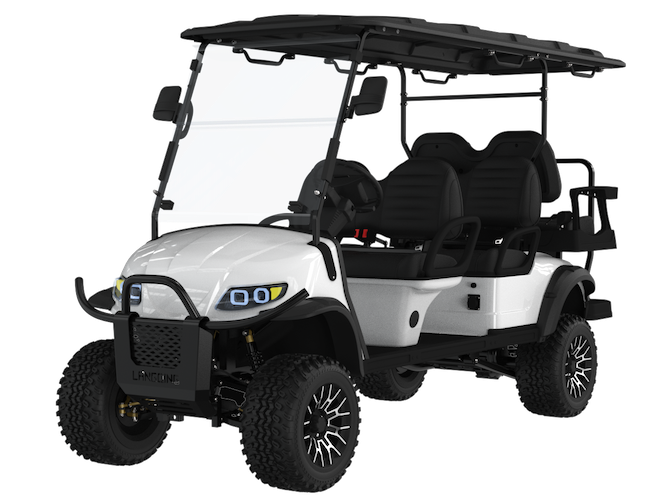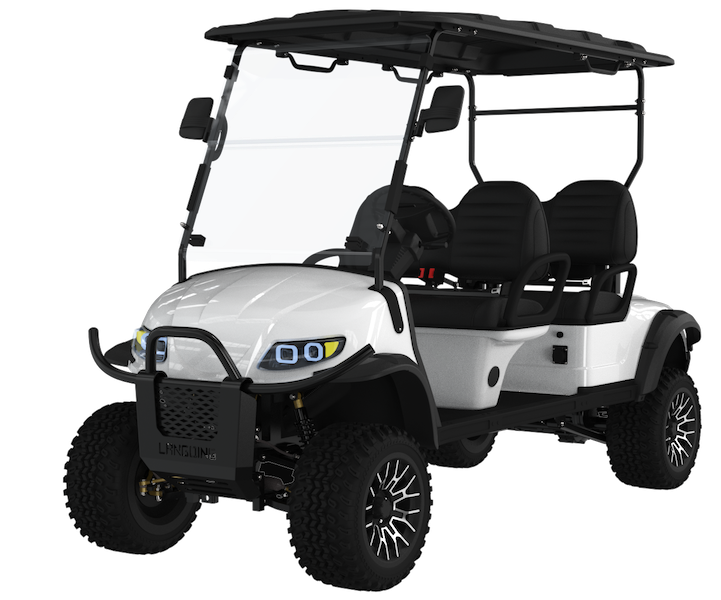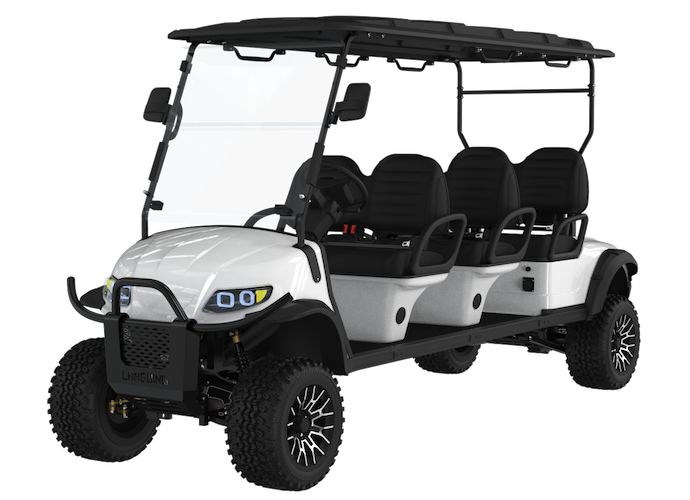Content Menu
● Understanding Electric Golf Carts
>> What Are Battery-Powered Electric Golf Carts?
>> What Are Solar-Powered Electric Golf Carts?
● Pros and Cons of Battery-Powered Electric Golf Carts
>> Advantages
>> Disadvantages
● Pros and Cons of Solar-Powered Electric Golf Carts
>> Advantages
>> Disadvantages
● Use Cases and Applications
>> Golf Courses
>> Resorts and Communities
>> Industrial and Commercial Settings
>> Recreational and Personal Use
● Maintenance and Longevity
>> Battery-Powered Electric Golf Carts
>> Solar-Powered Electric Golf Carts
● Environmental Impact
● Cost Analysis
>> Initial Investment
>> Operating Costs
>> Long-Term Savings
● User Experience: Performance and Comfort
● Conclusion
● FAQ
>> 1. What is the average range of a battery-powered Electric Golf Cart?
>> 2. How much does solar charging extend the range of an Electric Golf Cart?
>> 3. Are solar-powered Electric Golf Carts suitable for cloudy or rainy climates?
>> 4. What is the typical lifespan of batteries in Electric Golf Carts?
>> 5. Is the higher initial cost of solar-powered Electric Golf Carts justified?
Electric Golf Carts have transformed the way golfers, resorts, and communities approach personal and recreational transportation. With the growing emphasis on sustainability and efficiency, two main types of Electric Golf Carts have emerged as market leaders: battery-powered and solar-powered models. This comprehensive guide explores the pros and cons of each, helping buyers, OEM partners, and industry professionals make informed decisions.

Understanding Electric Golf Carts
What Are Battery-Powered Electric Golf Carts?
Battery-powered Electric Golf Carts are vehicles that utilize rechargeable batteries, typically lead-acid or lithium-ion, to power an electric motor. These carts are widely used on golf courses, in gated communities, and at resorts for their quiet operation and zero emissions during use. They are designed to provide smooth acceleration, easy handling, and sufficient range to cover the distances typically required on golf courses and within community settings.
What Are Solar-Powered Electric Golf Carts?
Solar-powered Electric Golf Carts are an evolution of the battery-powered model, equipped with photovoltaic panels that harness sunlight to recharge the batteries. This design reduces reliance on grid electricity and promotes renewable energy use, extending the range and reducing operational costs. Solar-powered carts are particularly beneficial in sunny climates, where sunlight is abundant and can be efficiently converted into electrical energy to supplement or even replace traditional charging methods.
Pros and Cons of Battery-Powered Electric Golf Carts
Advantages
- Zero Emissions: Battery-powered Electric Golf Carts produce no tailpipe emissions, making them environmentally friendly and suitable for eco-sensitive areas. This characteristic aligns with the increasing global demand for cleaner transportation solutions.
- Quiet Operation: The electric motor ensures minimal noise, preserving the tranquility of golf courses and residential areas. This is a significant advantage over gas-powered carts, which can disrupt the peaceful environment.
- Lower Operating Costs: Electricity is generally cheaper than gasoline, and electric motors require less maintenance due to fewer moving parts. This translates into savings over the life of the vehicle.
- Easy to Use: Simple controls and smooth acceleration make these carts user-friendly for all age groups, from young golfers to seniors.
- Improved Technology: Modern models with lithium-ion batteries offer longer life, better performance, and faster charging times compared to traditional lead-acid batteries. These advancements enhance the overall user experience.
Disadvantages
- Limited Range: The driving range depends on battery capacity and can be a concern for users needing extended travel without recharging. Heavy loads and hilly terrain can further reduce range.
- Charging Time: Batteries require several hours to recharge, which can be inconvenient for heavy or continuous use, especially during busy golf tournaments or resort peak hours.
- Battery Degradation: Over time, battery capacity diminishes, leading to eventual replacement costs. This degradation can affect performance and range.
- Initial Cost: High-quality batteries and electric drive systems can increase the upfront investment, which may be a barrier for some buyers.
- Load Capacity: Some models may have limited capacity for passengers or cargo compared to gas-powered alternatives, although this is improving with newer designs.
Pros and Cons of Solar-Powered Electric Golf Carts
Advantages
- Renewable Energy Source: Solar panels harness free, renewable sunlight, reducing dependence on grid electricity and fossil fuels. This makes solar-powered Electric Golf Carts an excellent choice for environmentally conscious users.
- Extended Range: Solar charging can extend the driving range by up to 10% or more, especially in sunny climates, reducing the frequency of plug-in charging.
- Longer Battery Life: Regular solar charging can prolong battery lifespan by minimizing deep discharge cycles, which are harmful to battery health.
- Minimal Operating Costs: After the initial investment, sunlight is free, leading to significant savings on energy bills over time.
- Eco-Friendly: Solar-powered Electric Golf Carts further reduce carbon footprint and promote sustainability, aligning with green initiatives in golf courses and communities.
- Reduced Maintenance: Solar panels require minimal upkeep, and the reduced strain on batteries can lower replacement frequency, contributing to lower long-term maintenance costs.
Disadvantages
- Weather Dependency: Solar efficiency drops in cloudy or rainy weather, potentially limiting performance in less sunny regions. This variability can affect reliability if solar power is the primary charging source.
- Higher Initial Cost: The addition of solar panels and related components increases upfront costs, which may deter budget-conscious buyers.
- Panel Efficiency: Actual energy gains depend on panel quality, installation angle, and sunlight exposure, requiring careful design and placement.
- Maintenance: Panels require periodic cleaning to maintain optimal efficiency, especially in dusty or polluted environments.
- Space Requirements: Solar panels add weight and require surface area, which may affect cart design and aesthetics. Some users may find the solar panels less visually appealing.

Use Cases and Applications
Golf Courses
Electric Golf Carts are the standard for modern golf courses. Battery-powered models are ideal for courses with reliable charging infrastructure, offering consistent performance throughout the day. Solar-powered carts excel in regions with abundant sunlight, reducing operational costs and environmental impact. Many golf courses are adopting solar-powered carts as part of their sustainability programs, showcasing commitment to green energy.
Resorts and Communities
For resorts and residential communities, Electric Golf Carts offer quiet, clean transportation. Solar-powered options are particularly attractive for eco-conscious developments seeking to showcase sustainability. They provide guests and residents with a convenient, environmentally friendly way to navigate large properties while reducing the community's carbon footprint.
Industrial and Commercial Settings
In warehouses, factories, and large campuses, both types of Electric Golf Carts provide efficient, emission-free mobility. Solar-powered carts can further reduce electricity costs and downtime, especially in facilities with outdoor operations and access to sunlight. Their quiet operation also minimizes noise pollution in work environments.
Recreational and Personal Use
Electric Golf Carts are increasingly popular for personal use in gated communities, retirement villages, and large private properties. Solar-powered carts offer an appealing option for users who prioritize sustainability and want to reduce their environmental impact while enjoying the convenience of electric transportation.
Maintenance and Longevity
Battery-Powered Electric Golf Carts
- Battery Care: Proper battery maintenance is crucial for maximizing lifespan. This includes regular charging, avoiding deep discharges, and keeping batteries clean and dry.
- Replacement Cycle: Lead-acid batteries typically last 2-5 years; lithium-ion batteries can exceed 10 years with proper care. Battery replacement is a significant maintenance cost to consider.
- General Upkeep: Electric motors and controllers require minimal maintenance compared to internal combustion engines, with occasional checks on wiring and connections.
Solar-Powered Electric Golf Carts
- Panel Cleaning: Solar panels should be kept free of dust, dirt, and debris to maintain optimal performance. Regular cleaning schedules can prevent efficiency loss.
- Battery Maintenance: Similar to battery-powered carts, but solar charging can extend battery life by reducing the depth of discharge.
- System Checks: Occasional inspection of wiring, solar panel mounts, and electrical connections ensures reliable operation and safety.
- Weather Considerations: In regions with frequent adverse weather, supplemental grid charging may be necessary to maintain battery levels.
Environmental Impact
Electric Golf Carts have a significantly lower environmental footprint than gas-powered alternatives. Battery-powered carts produce zero emissions during operation, contributing to cleaner air and reduced noise pollution. Solar-powered models take this a step further by utilizing renewable energy, reducing reliance on the grid and minimizing greenhouse gas emissions. The adoption of solar-powered Electric Golf Carts aligns with global sustainability goals and can enhance the green credentials of golf courses, resorts, and residential communities. By reducing fossil fuel consumption and promoting clean energy, these carts support efforts to combat climate change and preserve natural environments.
Cost Analysis
Initial Investment
- Battery-Powered: Moderate to high, depending on battery type and cart features. Lithium-ion battery carts tend to be more expensive upfront but offer better performance and longevity.
- Solar-Powered: Higher due to the cost of solar panels, installation, and integration with battery systems. However, prices are gradually decreasing as solar technology advances.
Operating Costs
- Battery-Powered: Electricity costs for charging; periodic battery replacement; minimal motor maintenance.
- Solar-Powered: Minimal electricity costs due to solar energy use; occasional panel cleaning; longer battery life reduces replacement frequency and associated costs.
Long-Term Savings
Solar-powered Electric Golf Carts offer greater long-term savings by harnessing free solar energy and extending battery lifespan. For high-usage environments or locations with high electricity costs, the return on investment can be substantial over several years. Additionally, some regions offer incentives or subsidies for solar-powered vehicles, further improving cost-effectiveness.
User Experience: Performance and Comfort
Both types of Electric Golf Carts deliver smooth, quiet rides and are easy to operate. Modern designs feature ergonomic seating, digital displays, and ample storage. Solar-powered models may offer slightly longer range and reduced downtime, enhancing the overall user experience, especially in sunny regions. The quiet operation and low vibration levels contribute to user comfort, making these carts suitable for all ages and abilities. Features such as adjustable seats, weather protection accessories, and advanced safety systems further improve usability.
Conclusion
Choosing between battery-powered and solar-powered Electric Golf Carts depends on specific needs, location, and budget. Battery-powered carts offer proven reliability and lower upfront costs, making them suitable for most environments with established charging infrastructure. Solar-powered Electric Golf Carts, while requiring a higher initial investment, provide unmatched sustainability, lower operating costs, and extended range in sun-rich areas. Both options contribute to cleaner, quieter, and more efficient transportation, supporting the global shift toward greener mobility solutions. As technology advances, the integration of solar power with battery systems is likely to become more widespread, offering even greater benefits to users worldwide.

FAQ
1. What is the average range of a battery-powered Electric Golf Cart?
The average range is typically 15-25 miles on a single charge, depending on battery type, terrain, and load. Lithium-ion batteries generally provide longer range compared to lead-acid batteries.
2. How much does solar charging extend the range of an Electric Golf Cart?
Solar charging can extend the driving range by up to 10% or more, especially in sunny conditions. This reduces the need for frequent plug-in charging and increases operational flexibility.
3. Are solar-powered Electric Golf Carts suitable for cloudy or rainy climates?
While solar-powered carts function in all weather, their efficiency decreases in prolonged cloudy or rainy conditions. In such climates, supplemental grid charging is recommended to maintain battery levels and performance.
4. What is the typical lifespan of batteries in Electric Golf Carts?
Lead-acid batteries last 2-5 years, while lithium-ion batteries can last up to 10 years or more with proper maintenance. Solar charging can help extend battery life by reducing deep discharge cycles.
5. Is the higher initial cost of solar-powered Electric Golf Carts justified?
Yes, for users in sunny regions or high-usage environments, the long-term savings from reduced electricity bills and extended battery life can offset the higher upfront investment. Additionally, the environmental benefits add value for eco-conscious buyers.










































